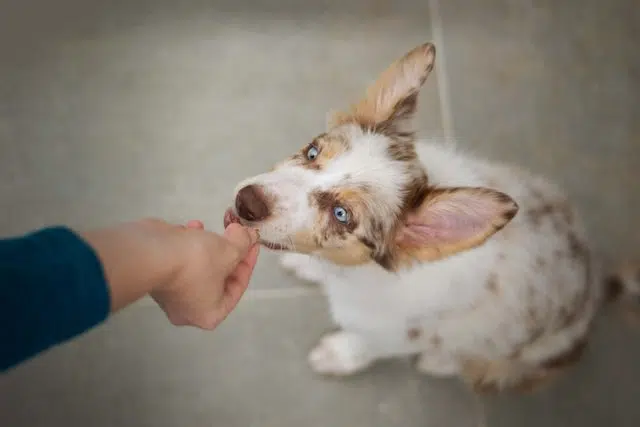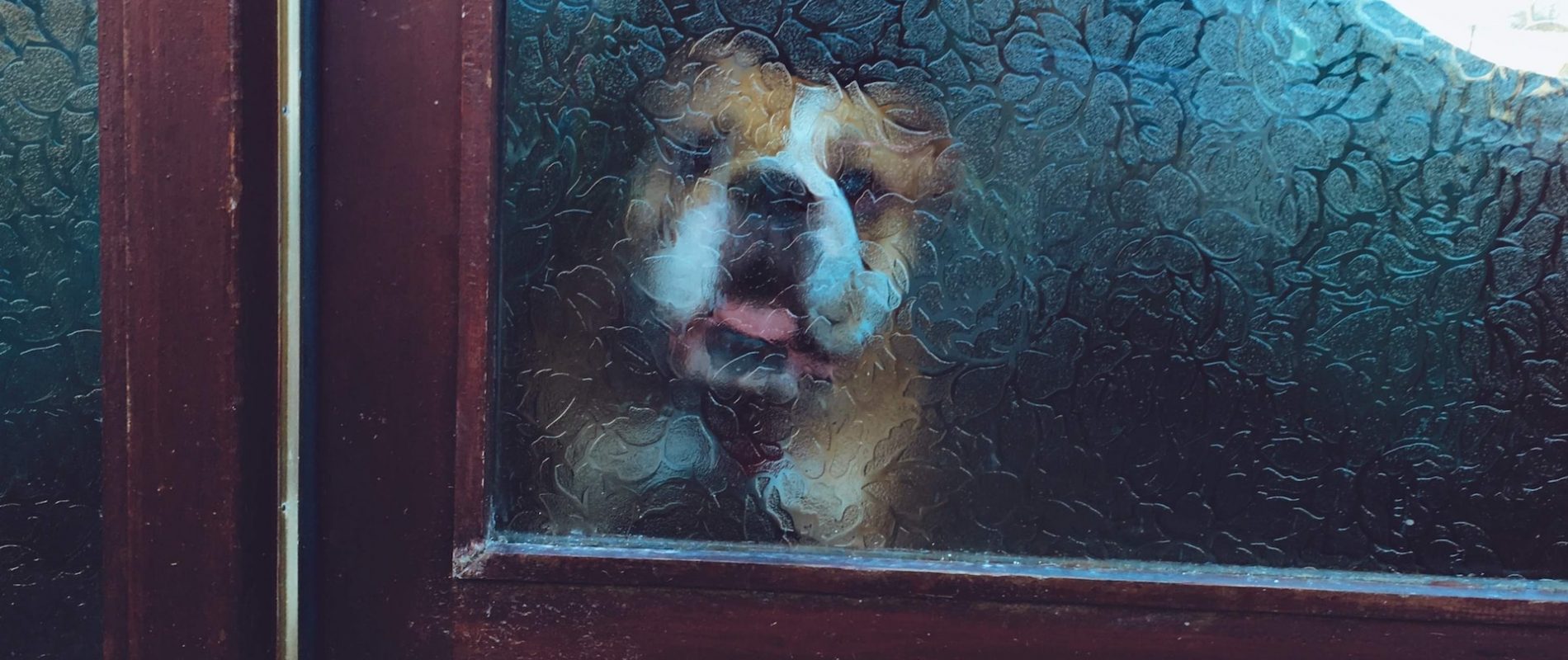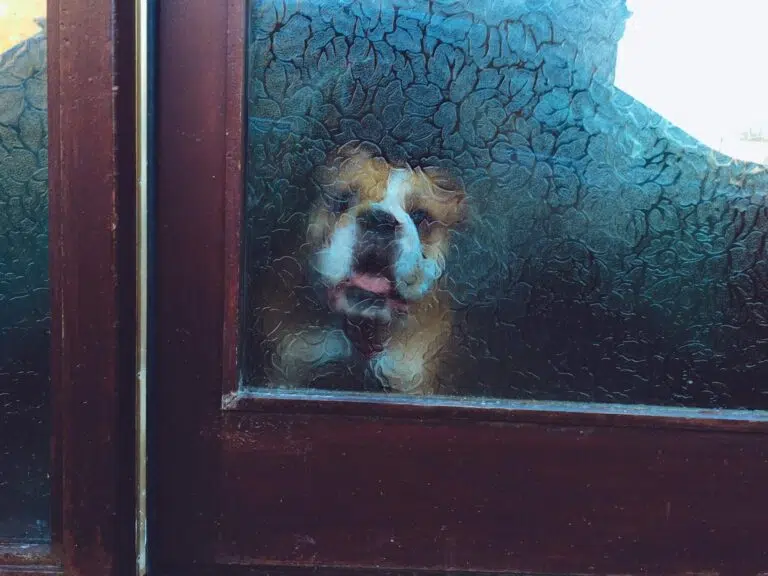Simply be with your dog at all times! Just kidding, although that would be an ideal world, right?
Leaving your beloved dog home alone can be a cause of worry for many pet owners. We all want our furry friends to be happy and comfortable, but sometimes they can experience separation anxiety. In this blog post, we will delve deeper into the concept of separation anxiety and explore ways we think you may not have tried yet to help them overcome it.
You may already know this, but let’s refresh it. What is Separation Anxiety in Dogs?
They love us! That’s why they can’t fathom the idea of being away from us.
Separation anxiety in dogs is a behavioral disorder that occurs when a dog becomes anxious and distressed when left alone or when they’re left with someone other than ourselves, their parents and best friends. It is more common in dogs with a strong attachment that have experienced changes in their living situation, or simply have never experienced the event of being alone.
Signs of separation anxiety can vary from mild to severe and may include excessive barking or howling, destructive behavior, house soiling, pacing, panting, or attempts to escape. These behaviors can be distressing for both the dog and you, but understanding the root causes can help us find effective solutions.
Has your pooch experienced any of these? Understanding the root of the issue is key to solving it.

Several factors can contribute to separation anxiety in dogs, including:
- Change in environment or routine: Dogs are creatures of habit, and any sudden changes, such as moving to a new house or a change in their daily routine, can trigger anxiety.
This one is probably the most overlooked cause. A sudden change can be as minimal as what happens from one hour to another. For example, if your dog is used to being with you from 6am to 9am but all of a sudden you leave from 7 to 8 for a quick coffee run, they may feel confused or even devastated. Or how about all of a sudden leaving them with a friend who they’ve never met before?
Any little change can be a trigger, so try to look closely at both your and your dog’s daily routine. - Past abandonment or traumatic experiences: Dogs that have been abandoned in the past or have experienced traumatic events are more prone to separation anxiety.
It’s a lot harder to solve this with adopted or rescued dogs as oftentimes it is impossible to get any information about their history and previous living situations. - Strong attachment: Dogs that have a close bond with their owners may become anxious when they are left alone.
Usually this is a result of them being used to spending 80% to 100% of their time with you. This is common in lots of dogs adopted during COVID when we were home with our furry friends almost 24/7. - Lack of socialization: Insufficient exposure to various environments, people, and other animals can make dogs more susceptible to separation anxiety.
Luckily for you, many restaurants, coffee shops, bars, breweries, etc often have dog friendly outdoor sitting; this is a great setting to give your dog some socialization. Not to mention of course going for a walk in places with lots of people.
Take a look and see if you still haven’t tried some of these tips for helping your dog with separation anxiety.

- Create a safe and comfortable space: Designate a specific area in your home where your dog feels secure. Fill it with their favorite toys, a comfy bed, and possibly clothing or blankets that smell like you or their mom. This can help provide them a sense of comfort and familiarity when you are away.
- Gradual desensitization: Gradually expose your dog to short periods of alone time, starting from just a few minutes and gradually increasing the duration. This process helps them learn that being alone is not scary or worrisome.
A great training session for separation desensitization is the following. Block 20 mins of your day and have dog treats with you. Walk out of the house for 10 seconds, then come back in and reward your pooch with a treat while showing signs of excitement and congratulating with the good old “Good Girl! / Good Boy!”. Then walk out again for another 10 seconds, come back in and repeat. Do this over and over again with several segments of 10 seconds and gradually increasing to 30 seconds, 1 minute, etc. The moment your hear your dog bark or cry, it means they’re having a hard time and you need to cut down on the time span.. So, if your dog did well with the 10 seconds all the way up to 1 minute, but at 2 minute intervals they have a hard time, then revert back to the 1 minute and stay there for the entire time in the 20 minute session.
Do this at least once a day or up to two/three times every day. Within the first week you’ll notice a drastic change and things will just keep getting better and better. - Establish a routine: Dogs thrive on routine. Establishing a consistent daily schedule for feeding, exercise, and alone time can help reduce their anxiety. Stick to this routine as closely as possible.
Exercise is especially important! Not always, but usually the more tired a dog is, the less anxiety they will have built up inside. - Consider professional help: In severe cases, consulting with a professional dog trainer or a veterinary behaviorist can provide tailored advice and solutions to help your dog overcome separation anxiety. There are several natural solutions out there, so if a professional gives advice for medication, try and do some research to see what natural options you have out there before you load up your furry friend with medicine.
- Use calming techniques: Provide your dog with interactive toys or puzzles, or consider using calming aids such as pheromone diffusers or anxiety wraps. These can help keep them occupied and relaxed while you are away.
Dogs, and most animals for that matter, are a mirror to the humans around them. Have patience and persistence and they’ll react the same.
Dealing with separation anxiety in dogs requires patience and persistence. It is essential to remember that overcoming separation anxiety takes time and individual dogs may respond differently to various techniques. By understanding the causes and implementing proactive strategies, you can help your furry friend feel more at ease and comfortable when home alone.
Remember, never punish your dog for their anxiety-related behaviors. Instead, focus on positive reinforcement and reward them when they exhibit calm behavior during alone time. With time, love, and understanding, you can help your beloved companion overcome separation anxiety and create a happier and more balanced life for them.

